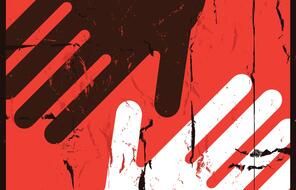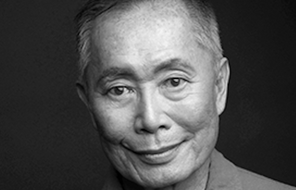There are phrases you hear so often that they begin to lose their meaning. The words become part of a series, like "bite the dust" or "have a blast." The title of Harper Lee's 1960 classic To Kill a Mockingbird is like that for me, despite its profound impact on the way I think about the world.
The first time I read To Kill a Mockingbird was as a student in the 8th grade. Memories are tricky, but as I recall we never talked about the title, or much else, in the book. The most memorable assignment my teacher gave us was to watch the 1962 film version on one of the local television stations. I suppose my teacher believed that watching someone else's vision of the book was safer than having us talk about the issues of race, class, discrimination, and justice it might raise during the heyday of desegregation battles in neighboring Boston.
Despite my teacher's neglect, To Kill a Mockingbird stuck with me. At first I noticed it in small ways: Walking home from friends’ houses in the gloaming I'd pass a yard filled with junk or overgrown grass, and I'd just know that Boo Radley lived there. I had to speed up.
As I got older and learned more, different scenes stuck. Scout confronting the lynch mob. Scout and Atticus on the porch talking about the upcoming trial. Jem’s outrage after the verdict. As a reader, I came to appreciate the dual narrative of Tom Robinson and Boo Radley, and how it lent itself to reflections on both the universal and the particular ways we think about race and the “other.” One thing, however, continued to elude me: the book’s title.
Transform how you teach Harper Lee's classic novel with Facing History's multimedia collection, "Teaching Mockingbird." Our study guide and lesson plans will help you use Mockingbird's setting as a springboard for engaging students in issues of justice, gender, and race.
I've read that To Kill a Mockingbird wasn't Harper Lee's first choice. Originally she called the book Atticus. I'm happy she didn't stick with that one. I always found the kids in the book far more interesting. SparkNotes, an online study site, explains, "The title of To Kill a Mockingbird has very little literal connection to the plot, but it carries a great deal of symbolic weight in the book. In this story of innocence destroyed by evil, the 'mockingbird' comes to represent the idea of innocence. Thus, to kill a mockingbird is to destroy innocence."
The longest quotation about the book's title appears in Chapter 10, when Scout explains:
"'Remember it's a sin to kill a mockingbird.' That was the only time I ever heard Atticus say it was a sin to do something, and I asked Miss Maudie about it.
'Your father's right,' she said. 'Mockingbirds don't do one thing but make music for us to enjoy…but sing their hearts out for us. That's why it's a sin to kill a mockingbird."
So, who is the symbolic mockingbird? Later in the book, Scout explains to Atticus that hurting their reclusive neighbor Boo Radley would be "sort of like shootin' a mockingbird." Mockingbirds are not the only birds in the book. Finch, the last name of Scout, Jem, and Atticus, is a small bird. Like mockingbirds, they are also songbirds.
Is Tom Robinson, the black man accused of sexually assaulting a white woman, a bird as well? While Tom is innocent, I do not think of him as having the same innocence as the children or Boo. As a black man in depression-era Alabama, I'm sure Tom could teach me quite a bit. Sadly, we don't learn that much about his life beyond the trial. Critics have said Lee did not give the book's black characters enough agency or backstory. I hope Tom wasn't meant to be the mockingbird Miss Maudie describes to Scout because, consciously or subconsciously, her words evoke old black minstrel stereotypes depicting African Americans as happy-go-lucky and singing a song without a care in the world. The Tom I imagine isn't a stereotype. He lives a full life. I wonder what he might tell us that our narrator, young Scout, does not know.
When I think of To Kill a Mockingbird, the bird that comes to mind is not a mockingbird at all. It is the proverbial canary in the coal mine (another one of those phrases we don't think about very much). The treatment of Tom and Boo as they face the spoken and unspoken dictates of Maycomb gives life to the stock image of the canary. These two canaries expose the fragility of democracy when prejudice, myth, and misinformation go unchecked.
In the years since its publication, the title "To Kill a Mockingbird" has developed a meaning that goes beyond its internal logic. For many readers, the book and its characters live with them as intimates. The story offers a reflection point for the moral dilemmas we face in our own lives. As if to prove the point, a colleague recently brought me a bumper sticker that makes me smile every time I think about it. It asks, "What would Scout do?"
Don't miss out!
- download classroom materials
- view on-demand professional learning
- and more...














